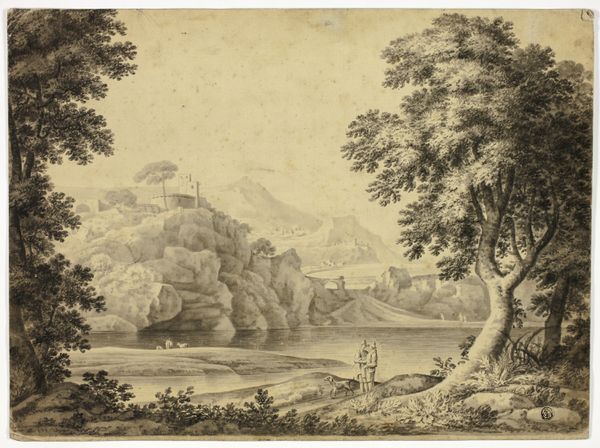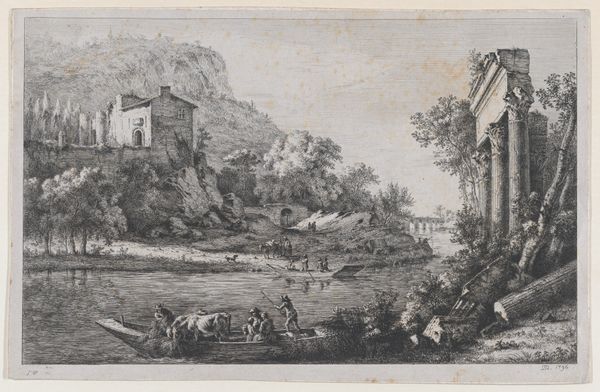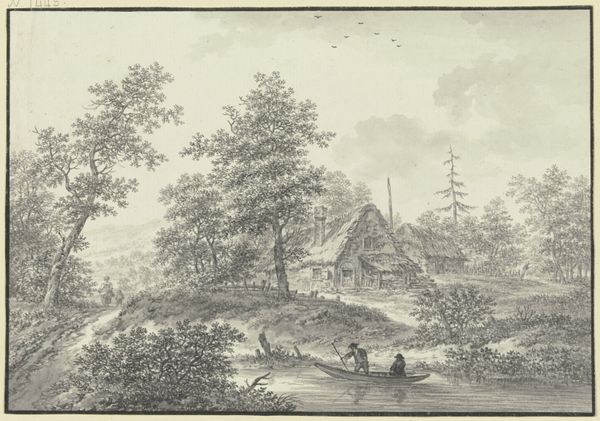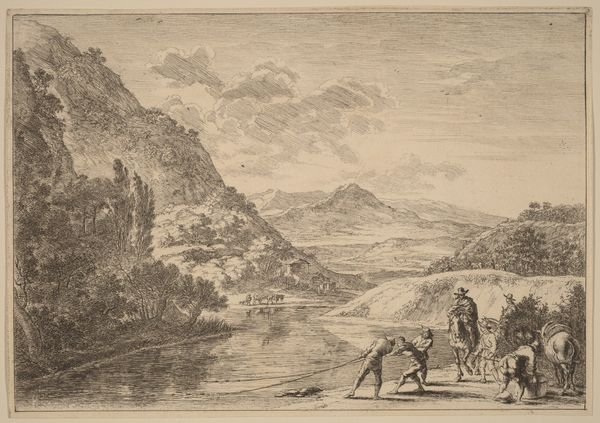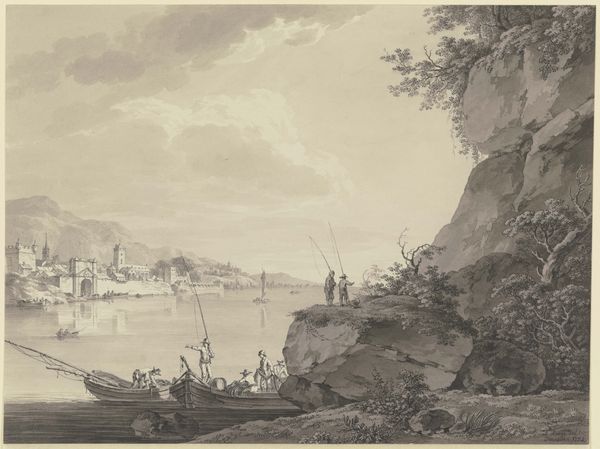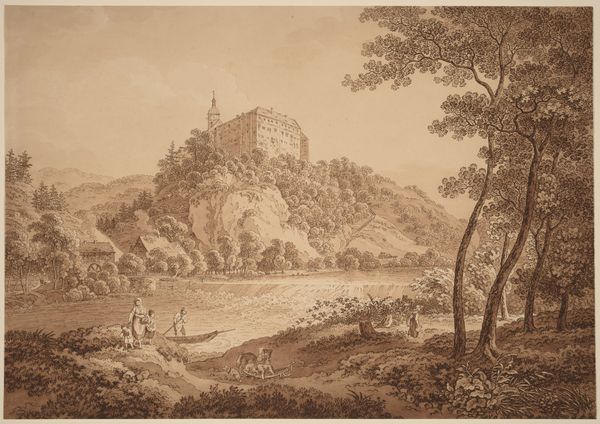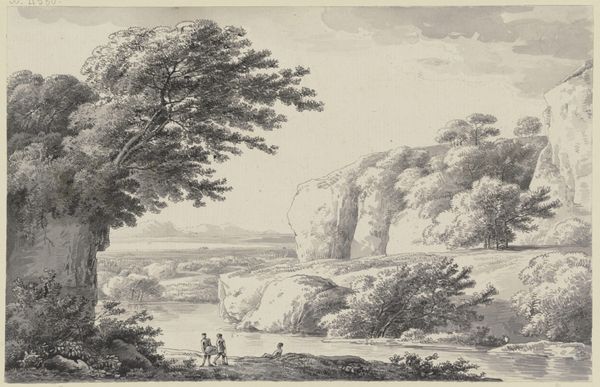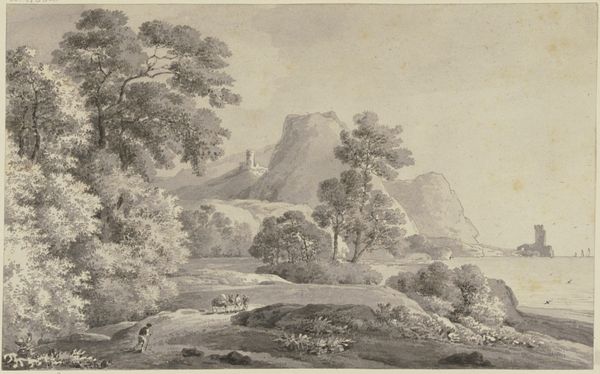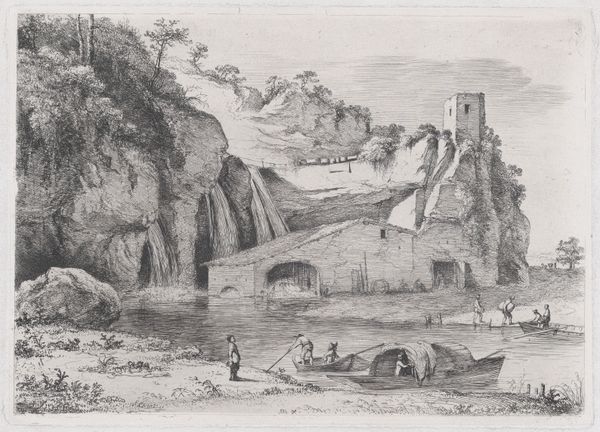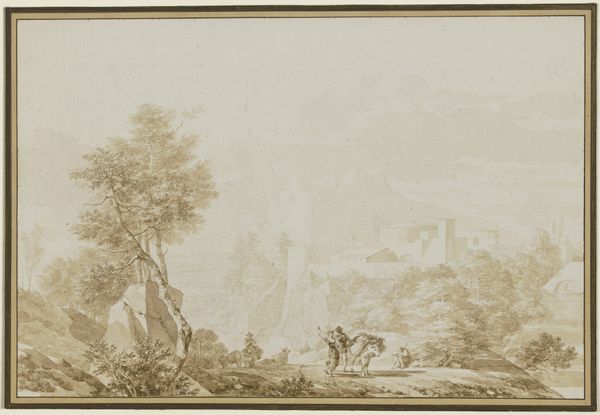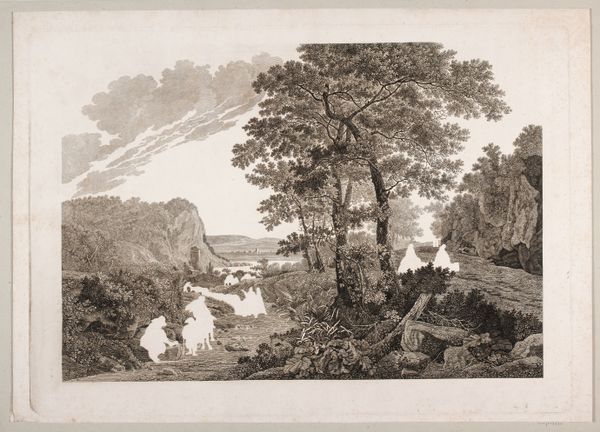
drawing, graphite
#
drawing
#
landscape
#
form
#
romanticism
#
15_18th-century
#
graphite
#
pencil work
#
realism
Copyright: Public Domain
Carl Philipp Schallhas created this ink and wash drawing, "Flüßchen in einem Felsental," capturing a scene where man communes with nature. At first glance, the fishermen dominate the foreground, yet the crumbling ruins on the high hilltop command a deeper, more unsettling presence. Consider how ruins appear throughout art history, and how their presence speaks to our understanding of time, decay, and the transience of human endeavor. Like the Rückenfigur, they invite viewers to ponder the weight of history and their place within its grand narrative. The ruined architecture speaks of a bygone era, its symbolism evolving across time. From symbols of power and permanence, these structures, once decayed, become potent symbols of human vanity and inevitable decline. The composition evokes a sense of melancholic longing. The psychological impact of ruins lies in their ability to awaken a deep, almost subconscious recognition of our mortality. A reminder of the cyclical nature of civilization, where what is built must eventually crumble.
Comments
No comments
Be the first to comment and join the conversation on the ultimate creative platform.

